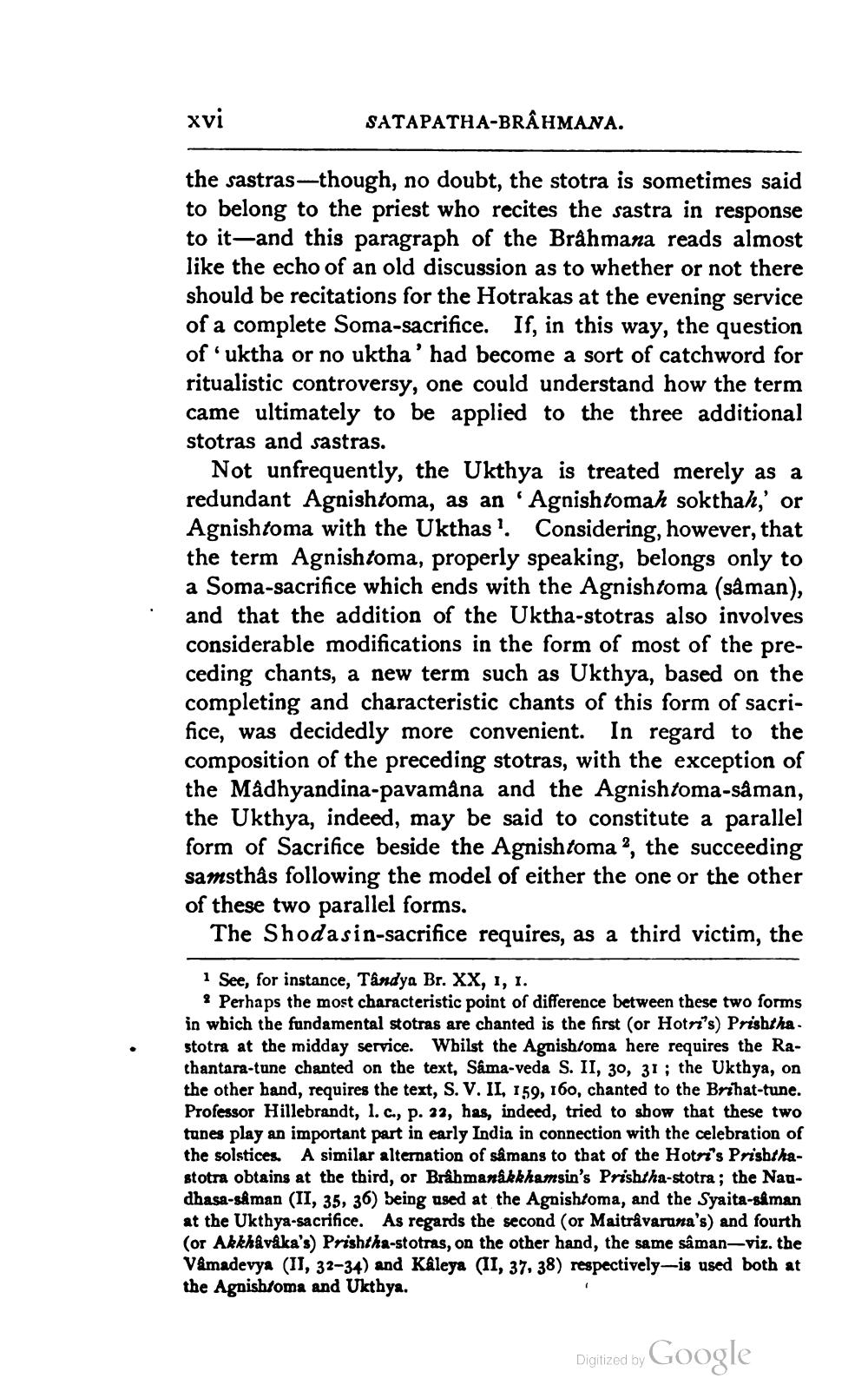________________
xvi
SATAPATHA-BRAHMANA.
the sastras-though, no doubt, the stotra is sometimes said to belong to the priest who recites the sastra in response to it—and this paragraph of the Brahmana reads almost like the echo of an old discussion as to whether or not there should be recitations for the Hotrakas at the evening service of a complete Soma-sacrifice. If, in this way, the question of 'uktha or no uktha' had become a sort of catchword for ritualistic controversy, one could understand how the term came ultimately to be applied to the three additional stotras and sastras.
Not unfrequently, the Ukthya is treated merely as a redundant Agnishtoma, as an 'Agnishtomah sokthah,' or Agnishtoma with the Ukthas! Considering, however, that the term Agnishtoma, properly speaking, belongs only to a Soma-sacrifice which ends with the Agnishtoma (saman), and that the addition of the Uktha-stotras also involves considerable modifications in the form of most of the preceding chants, a new term such as Ukthya, based on the completing and characteristic chants of this form of sacrifice, was decidedly more convenient. In regard to the composition of the preceding stotras, with the exception of the Mâdhyandina-pavamana and the Agnishtoma-saman, the Ukthya, indeed, may be said to constitute a parallel form of Sacrifice beside the Agnishtoma?, the succeeding samsthås following the model of either the one or the other of these two parallel forms.
The Shodasin-sacrifice requires, as a third victim, the
1 See, for instance, Tandya Br. XX, 1, 1.
? Perhaps the most characteristic point of difference between these two forms in wbich the fundamental stotras are chanted is the first (or Hotri's) Prishtha. stotra at the midday service. Whilst the Agnishtoma here requires the Rachantara-tune chanted on the text, Sáma-veda S. II, 30, 31; the Ukthya, on the other hand, requires the text, S. V. II, 159, 160, chanted to the Brihat-tune. Professor Hillebrandt, 1. c., p. 32, has, indeed, tried to show that these two tanes play an important part in early India in connection with the celebration of the solstices. A similar alternation of samans to that of the Hotri's Prishthastotra obtains at the third, or Brahmanakkhamsin's Prishtha-stotra; the Nagdhasa-saman (II, 35, 36) being used at the Agnishtoma, and the Syaita-saman at the Ukthya-sacrifice. As regards the second (or Maitråvaruna's) and fourth (or Akkhåvåka's) Prishtha-stotras, on the other hand, the same sâman-viz. the Vamadevya (11, 32-34) and Kaleya (II, 37, 38) respectively-is used both at the Agnishtoma and Ukthya.
Digitized by Google




